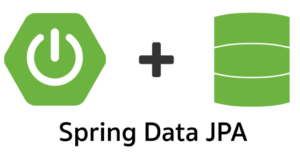PHP For Kids
“PHP Playground: A Kid’s Guide to Web Wizardry” is a vibrant and interactive e-book that introduces children to the world of web development using PHP. Packed with colorful illustrations and fun activities, this guide takes young readers on a journey from setting up their development environment to creating dynamic web pages and interactive forms. With…
In a microservices architecture, an application is broken down into smaller, independent services that communicate with each other. This architecture provides numerous benefits, such as scalability and flexibility, but it also introduces complexity, particularly in monitoring and debugging. Distributed tracing is a crucial technique for monitoring performance across microservices, helping to identify bottlenecks and understand the flow of requests.
This article will explore the concept of distributed tracing, its importance in microservices, and provide practical examples using popular tools like Jaeger and Zipkin.
What is Distributed Tracing?
Distributed tracing is a method used to track requests as they move through various services in a microservices architecture. It provides a comprehensive view of the lifecycle of a request, including:
- The path taken by the request through different services.
- The time spent in each service.
- The status of the request at each stage.
Distributed tracing helps in diagnosing performance issues, identifying latency sources, and understanding the dependencies between services.
Why is Distributed Tracing Important?
In a monolithic application, tracing the execution path of a request is relatively straightforward. However, in a microservices architecture, a single user request might trigger calls to multiple services. Distributed tracing addresses several challenges:
- Latency Identification: It helps pinpoint which service or part of the application is causing delays.
- Root Cause Analysis: By tracing the request flow, developers can identify the root cause of failures or performance degradation.
- Dependency Management: It provides insights into service dependencies and their impact on overall performance.
Implementing Distributed Tracing in Microservices
1. Choosing a Tracing Tool
There are several tools available for distributed tracing. Two popular ones are Jaeger and Zipkin. Both tools provide similar functionalities, including tracing, monitoring, and visualizing the flow of requests across services.
2. Setting Up Jaeger with Spring Boot
Step 1: Add Dependencies
First, add the necessary dependencies to your pom.xml file:
<dependency>
<groupId>io.opentracing.contrib</groupId>
<artifactId>opentracing-spring-jaeger-cloud-starter</artifactId>
<version>3.2.1</version>
</dependency>
<dependency>
<groupId>org.springframework.boot</groupId>
<artifactId>spring-boot-starter-actuator</artifactId>
</dependency>
Step 2: Configure Jaeger
Next, configure Jaeger in your application.properties file:
opentracing.jaeger.udp-sender.host=localhost
opentracing.jaeger.udp-sender.port=6831
opentracing.jaeger.enabled=true
Step 3: Instrument Your Services
With dependencies and configuration in place, your Spring Boot application will automatically start sending traces to Jaeger. Here’s an example of a simple service:
import org.springframework.web.bind.annotation.GetMapping;
import org.springframework.web.bind.annotation.RestController;
@RestController
public class TracingController {
@GetMapping("/trace")
public String trace() {
return "Tracing example with Jaeger";
}
}
Run your application and navigate to http://localhost:16686 to access the Jaeger UI and visualize the traces.
3. Setting Up Zipkin with Spring Boot
Step 1: Add Dependencies
Add the Zipkin dependencies to your pom.xml file:
<dependency>
<groupId>org.springframework.cloud</groupId>
<artifactId>spring-cloud-starter-zipkin</artifactId>
</dependency>
<dependency>
<groupId>org.springframework.boot</groupId>
<artifactId>spring-boot-starter-actuator</artifactId>
</dependency>
Step 2: Configure Zipkin
Configure Zipkin in your application.properties file:
spring.zipkin.base-url=http://localhost:9411
spring.sleuth.sampler.probability=1.0
Step 3: Instrument Your Services
Similar to Jaeger, Spring Boot with Zipkin will automatically instrument your services. Here’s an example of a simple service:
import org.springframework.web.bind.annotation.GetMapping;
import org.springframework.web.bind.annotation.RestController;
@RestController
public class TracingController {
@GetMapping("/trace")
public String trace() {
return "Tracing example with Zipkin";
}
}
Run your application and navigate to http://localhost:9411 to access the Zipkin UI and visualize the traces.
Analyzing Traces
Both Jaeger and Zipkin provide a user-friendly interface to visualize and analyze traces. You can see the complete path of a request, the time taken by each service, and identify any bottlenecks or failures.
Best Practices for Distributed Tracing
- Consistent Trace IDs: Ensure all services propagate the same trace ID for a request to maintain a coherent trace across services.
- Sampling: Implement sampling to control the volume of traces collected and stored, balancing between performance overhead and traceability.
- Logging Integration: Combine distributed tracing with logging to provide more context and facilitate debugging.
- Alerting: Set up alerts based on trace data to proactively identify and address performance issues.
Conclusion
Distributed tracing is an essential technique for monitoring and debugging microservices architectures. By implementing tools like Jaeger or Zipkin, you can gain valuable insights into the performance and behavior of your services. This helps in identifying bottlenecks, understanding dependencies, and improving the overall reliability of your application.
With the examples provided, you can start implementing distributed tracing in your Spring Boot microservices and leverage its benefits to enhance your application’s performance and maintainability.






